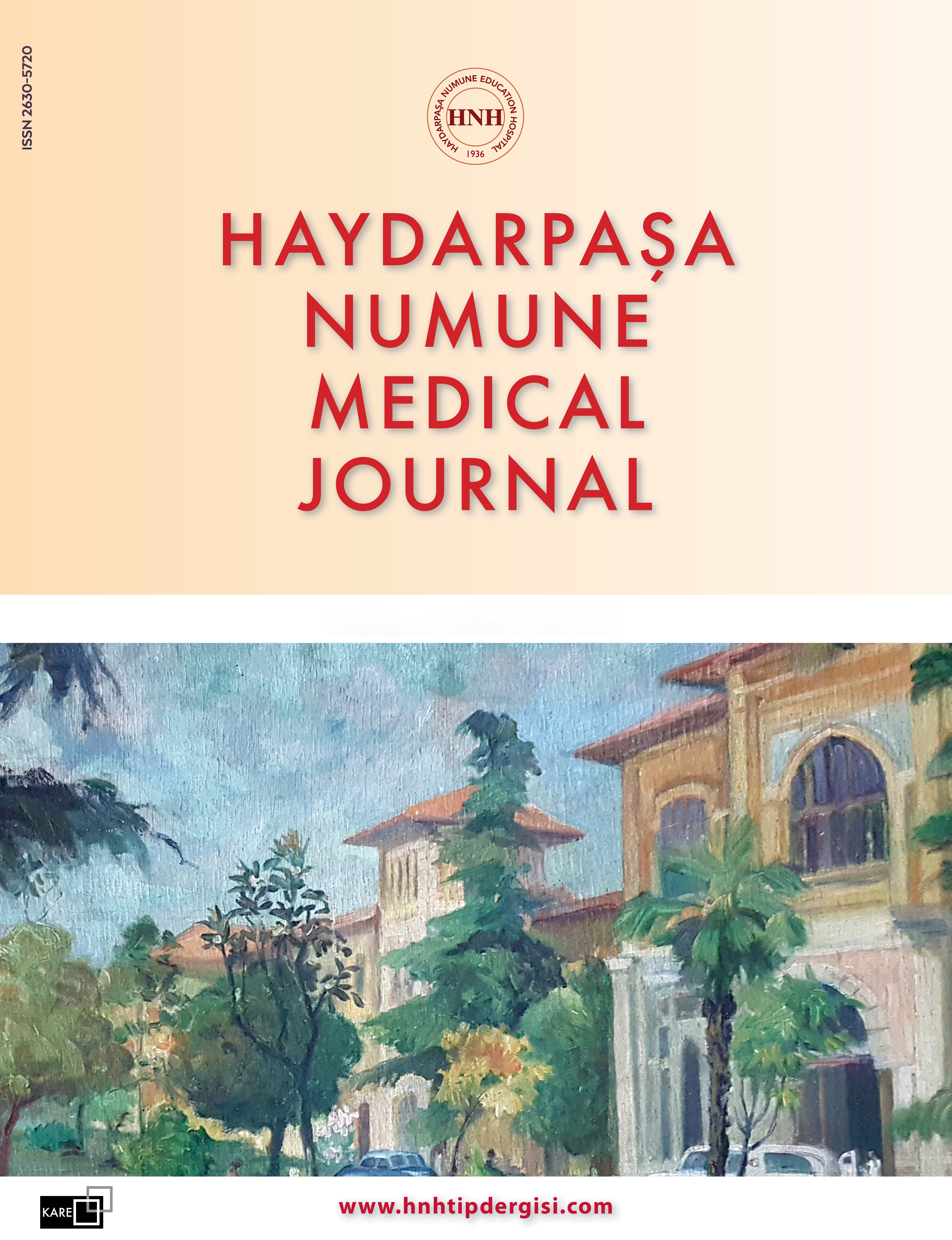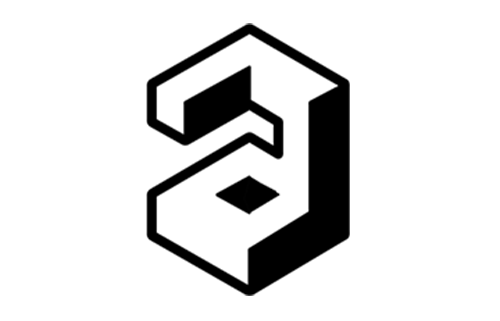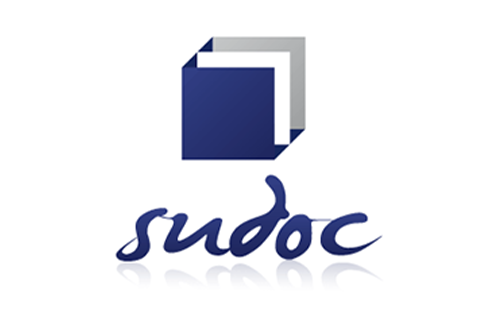Volume: 52 Issue: 2 - 2012
| RESEARCH ARTICLE | |
| 1. | Indications For Keratoplasty Alime Güneş Pages 63 - 66 INTRODUCTION: To evaluate the distribution of indications and the type of operation for keratoplasty (KP) operations. METHODS: Records of all patients who underwent KP at Umraniye Training and Research Hospital Eye Clinic, between September 2010- December 2011 were rewiewed retrospectively. The age and sex of the patient, indication for keratoplasty and type of the operation (penetrating keratoplasty (PK), deep anterior lamellar keratoplasty (DALK), penetrating keratoplasty (PK) only or concomitant surgical procedures) were recorded. RESULTS: A total of 95 operations were included in the study. The most common indication was pseudophakic corneal edema ( 32 eyes; %33.6), keratoconus is the second most common indication (29 eyes %30.5) and regraft is the third most viewed (11 eyes; %11.5). Of the 95 operations, 82 (%86.3) were PK and 13 (%13.6) were DALK. Of the PK operations, 4 (%4.8) were combined with extracapsular cataract extraction (ECCE) and posterior chamber (PC) intraocular lens (IOL) implantation, 3 (%3.6) were combined with scleral fixated (SF) IOL implantation, 1 (%1.2) were combined with sulcus IOL implantation, 2 (%2.4) were combined with pupilloplasty, 2 (%2.4) were combined with synechiolysis. DISCUSSION AND CONCLUSION: In our clinic, pseudophakic corneal edema was the most common indication for keratoplasty. Keratoconus, regraft, corneal dystrophy and traumatic skar were other common indications. |
| 2. | The Impact Of Itensive Care Unit Services On Hospital Costs Aygül Yanık, Osman Ekinci, Şahin Kavuncubaşı, Turhan Çaşkurlu Pages 67 - 73 INTRODUCTION: The most important factor in directing hospital managers studies to ensure and improve the economic performance is understanding units cost according to services. In our study; we aimed to determine the impact of 2010 Intensive Care Unit (ICU) services on the hospital costs in Haydarpasa Numune Training and Research Hospital. METHODS: Our study is designed as retrospective. After getting the institution approval, face-to-face interview was performed with managers of hospital and services, and also salivary trustee, procurement processing files, accrue expense documents, branch staff, storage, revolving fund records were examined to collect information. In analysis of costs, fractional distribution method was applied. RESULTS: ICU constitutes 3.43% of hospital bed count, though its cost has high ratio of 5.09% of total hospital cost. In the study, cost of intensive care unit was 6.112.864 TL, mean intensive care patient day cost was 711.625 TL. Hospital total cost was found to be 119.919.010 TL, excluding ICU was 113.806.146 TL and mean hospital patient day cost excluding ICU was 578.97 TL. The cost of ICU patient per day was higher than hospital patient per day cost in a ratio of 22.91%. DISCUSSION AND CONCLUSION: The optimum cost should be maintained by developing data collection systems to provide qualified services together with continuous supervision performed to control costs in hospitals. This study will lead senior management to evaluate requests of ICU bed and staff number by their knowing that increasing intensive care bed number results in 22.91% higher costs than that of other units. |
| 3. | The Comparison Of Lay-Open, Karydakis Flap And Limberg Flap Techniques In Pilonidal Sinus Surgery Aziz Ocakoğlu, Ethem Ünal Pages 74 - 78 INTRODUCTION: The purpose of this study was to compare the results of laying open, Karydakis flap and Limberg flap techniques used in our patients with pilonidal sinus disease and to discuss our findings with current literature. METHODS: Patients operated for pilonidal disease between January 2008 and December 2009 were evaluated. Medical records were investigated for demographics, operative technique applied, hospitalization period, complications and recurrences. Statistical analysis was done using ANOVA (post hoc Tukey-HSD) test, and p<0.05 was considered as statistically significant. RESULTS: There were 84 patients (79 men, 94 % and 5 women, 6 %). Mean age was calculated as 24.6 (15-44). Patients were evaluated as laymen after sinus excision (Group 1, N=22, 26.1 %), Karydakis lateral flap (Group 2, N=27, 32.1 %) and romboid Limberg flap group (Group 3, N=35, 41.6 %). Average postoperative follow-up period was 32 months (18-44). Even there were no difference among the groups regarding hospitalisation period (p>0.05), healing process was seen to be longer for group 1 in comparison to the other groups (p<0.05). Wound discharge, infection and abscess were seen to be more often in group 3. Wound detachment rate was higher for the groups in whom suture closure was applied (groups 2 and 3). Recurrence rate was highest in group 2 (11 %). DISCUSSION AND CONCLUSION: Laying open, Karydakis flap and Limberg flap techniques all have their own advantage and disadvantages. The most reliable methods regarding the recurrence rate were laymen and Limberg flap techniques. |
| 4. | Evaluation Of Demographic Features, Clinical And Laboratory Findings Of Probable Cases With Crimean- Congo Hemorrhagic Fever Zehra Esra Önal, Funda Yavanoğlu Atay, Gürkan Atay, Tamay Gürbüz, Narin Akıcı, Çağatay Nuhoğlu, Ömer Ceran Pages 79 - 82 INTRODUCTION: We aimed to evaluate the symptoms, demographic features and laboratory findings of children who were bited by ticks and taken to our clinic with risk assessment of Crimean- Congo Hemorrhagic Fever (CCHF) between 2007- 2009 years. METHODS: This study included 32 male and 31 female children aged between 0 and 14 years old who were bited by ticks. The mean ages were 3.92 ± 2.75 years for girls and 4.42 ± 2,77 years for boys. Presenting symptoms, haematological manifestations (hemogram, AST, ALT, INR, PT ) and outcome of the disease were evaluated. RESULTS: Following an incubation period of 3-10 days, acute- onset fever was the most commonly seen symptom among our hospitalized children. Nonspesific symptoms such as headache, myalgia, arthalgia, nausea, weakness followed the fever. Laboratory findings revealed leucocytosis, decreased hemoglobin and haematocrit levels, elevated AST, prolonged prothrombin time and thrombocytopenia. Full recovery was obtained in all children without any fatal outcome. DISCUSSION AND CONCLUSION: We experienced that, the vector for CCHF, the Hyalomma tick was not present in İstanbul between 2007-2009 outbreaks. Since climate, environmental factors and human behaviour influence CCHF epidemiology and spread, whe should be aware of tick-control and prevention strategies including public education. |
| 5. | Analysis Of The Patients Who Underwent Transrectal Ultrasound Guided Prostate Biopsy Selahattin Çalışkan, Orhan Koca, Mehmet Akyüz, M. İhsan Kahraman Pages 83 - 87 INTRODUCTION: In our study we aimed to determine incidence of prostate cancer (PC) in patients who underwent transrectal ultrasound (TRUS) guided prostate biopsy and the differences between benign prostatic hyperplasia (BPH) and PC in terms of age and PSA levels. METHODS: 2175 patients who underwent TRUS guided prostate biopsy between 2004 and 2010 years were studied. Total PSA, prostate volume (PV) were determined. Patients ages were between 41 and 96 years. Abnormal digital rectal examination and high PSA levels (>4 ng/ml) were the indications of TRUS guided prostate biopsy. RESULTS: PC was diagnosed in 662 patients (%30.4).1403 patients (%64.5) had BPH pathology. High grade prostatic intraepithelial neoplasia (HGPIN) and atypical small acing proliferation (ASAP) were diagnosed in 13 (%0.6) and 81 (%3.6) patients. Granulomatous prostatitis (GP) was detected in 7 patients (%0.3). Mean ages of BPH and PC patients were 66.2±9.4 and 70.3±8.7. Total PSA levels were 9.5±7.2 ng/ml in BPH patients and 90.2±31.1 ng/ml in PC patients. DISCUSSION AND CONCLUSION: TRUS guided biopsy is necessary for diagnosis of PC. But approximately one third of the patients who were biopsied have PC. PC is seen in more advanced ages than BPH. PSA levels are higher in PC patients when compared with BPH patients. |
| 6. | Zonguldak Karaelmas University Medical Students Opinions About Euthanasia Volkan Hancı, Serhan Yurtlu, Ferruh Ayoğlu, Okan Yavuzalp, Işıl Özkoçak Turan Pages 88 - 93 INTRODUCTION: In this study opinions of medical students about euthanasia were evaluated. METHODS: After approval from the ethics committee, Karaelmas University Faculty of Medicine 1stst, 2th, 3th, 4th, 5th and 6th class students were administered in our study. Total of 195 students were taken our study. Datas were collected by a questionnaire. RESULTS: According to results of this questionnaire 45.6 % of medical students thought that euthanasia must be legalized. 39.5 % of students were against the euthanasia and the was primary cause of this opposition religious beliefs (39.2%). Secondary cause was determined as risk of misusing (34.2%). 139 students (71.3%) adduce not to punish the physician who performs euthanasia. 161 (82.6%) think that its appropriate to discuss euthanasia in our country. DISCUSSION AND CONCLUSION: Although our country legally prohibited, significant medical students are seen as supporters of euthanasia. Physicians or other public sector could not be easily supporters or opposition of euthanasia. Most appropriate approach for our countrys determination to euthanasia in order for our country and region-specific differences in terms not only of physicians in every segment of society is necessary to investigate. |
| REVIEW | |
| 7. | Legal Responsibilities Of Anesthesia And Reanimation Specialist: Liabilities Under The Turkish Penal Code No. 5237 Volkan Hancı, Kemalettin Acar, Işıl Özkoçak Turan Pages 94 - 103 In our day, it is not enough for doctors to merely follow and obtain the latest medical knowledge and skills while they perform their art. Other bases of medical practice, medical law and medical ethics, are also determinants in the profession. In addition to complying with the generally accepted principles and rules of medicine and the standard implementations of anesthesia and reanimation, it is of primary importance for doctors so as not to come face to face with legal issues during medical practice to also follow the ethical values of the profession and be informed about the relevant laws. All societies is applied the sanctions system, wich called penalty, because of maintain order communities and society. Criminal business objective as is a proven crime shall be implemented as money. Process is aimed at crime only. A judicial decision is dominating. Law and may be determined by law Crime and punishment in Turkey is organised by the new Turkish Penal Code (TPC) number 5237, since the 1st June 2005. 4th articles in penal code of 5237 was stated an excuse for not knowing the law is being considered, open and clearly. Physicians may be harm the patient such as professional ineptitude-deficiency, careless, imprudence, or lack of care in their medical practice. Physicians can be considered legally defective in this case. Therefore, all physicians should be aware of, about the legal profession, legal and criminal responsibility and what sanctions this responsibility can be applied in case of out order. This article summarizes the legal responsibilities of Anesthesia and Reanimation experts in light of the New Turkish Penal Code No. 5237. |
| CASE REPORT | |
| 8. | Initial Radiologic Findings Of Osteoporosis In Imerslundgrasbeck Syndrome In Early Adolescence Nevzat Aykut Bayrak, Esra Tozan Bayrak, Çağatay Nuhoğlu, Duygu Sömen Bayoğlu, Veysel Bayoğlu, Ömer Ceran Pages 104 - 107 Imerslund-Grasbeck syndrome (İGS) is a malabsorption syndrome with favorable prognosis where vitamin B12 deficiency and proteinuria is detected. One of the major problems that patients with this disease face in the elderly is osteoporosis. In this case report, we summarize the diagnostic course of a suspected İGS patient presented to our clinic with initial radiologic findings of osteoporosis in early adolescence. |
| 9. | General Anaesthesia In Crouton Syndrome Emine Kumser Dinçer, Nurettin Kurt, Asu Özgültekin, Güldem Turan, Nebahat U. Özdemir, Selda Peker Pages 108 - 110 Crouzon syndrome, also known as craniofacial disostosis, is an autosomal dominant condition characterised by early closure of cranial suture, hypertelorism, exophthalmus, maxillar hypoplasia and typical frog-like appearance of face. Respiration problems are often due to narrow air ways. Difficult intubation and respiratuar complications in preoperative period are often seen in general anaesthesia. In our case, crainotomy was planned by the neurosurgery clinic for craniosynostosis to a 13 months old male baby diagnosed as Crouton syndrome at birth. We aimed to draw attention with this case to anaesthesia practice of Crouton syndrome, a rare case which causes difficult airway due to anatomic disorders. |
















